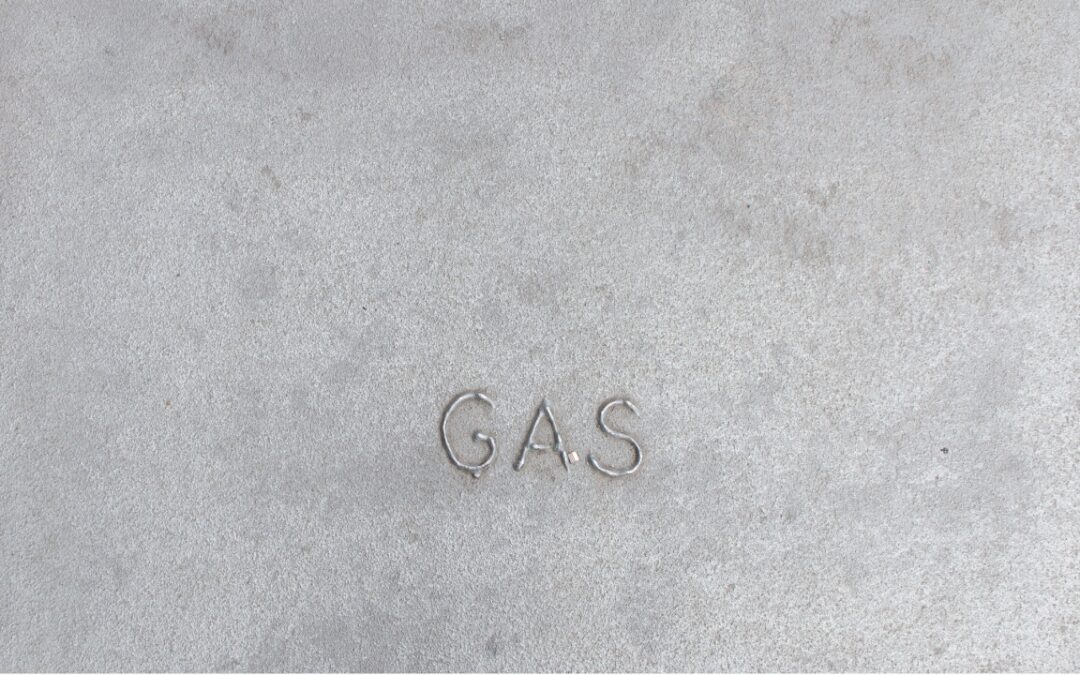Sewer gas is a mixture of various gases produced by the decomposition of organic waste in sewer systems. While it might seem like a minor nuisance, sewer gas can pose serious health risks if it accumulates in your home or workplace. Understanding the dangers of sewer gas and recognizing the symptoms of sewer gas poisoning are crucial for ensuring the safety and well-being of your household or employees. At NW Sewer and Drain, we prioritize your safety and are here to provide you with essential information about this potential hazard.
What is Sewer Gas?
Sewer gas is a complex mixture of gases, including:
- Hydrogen Sulfide (H2S): Known for its characteristic rotten egg smell, hydrogen sulfide is a toxic gas that can be harmful even in low concentrations.
- Methane (CH4): Methane is a colorless, odorless gas that is highly flammable and can pose an explosion risk.
- Ammonia (NH3): Ammonia has a strong, pungent odor and can be irritating to the eyes, nose, and throat.
- Carbon Dioxide (CO2): While not toxic at low levels, high concentrations of carbon dioxide can displace oxygen and pose asphyxiation risks.
How Sewer Gas Enters Your Home
Sewer gas can enter your home or workplace through various points, including:
- Dry P-Traps: The P-trap is designed to hold water, creating a seal that prevents sewer gas from entering your home. If the P-trap dries out, the seal is broken, allowing gas to escape.
- Cracked or Damaged Pipes: Cracks or damage in your sewer pipes can allow gas to leak into your home.
- Blocked Vents: Plumbing vents allow sewer gases to escape outside. If these vents are blocked, the gas can build up and enter your living spaces.
- Faulty Plumbing Fixtures: Poorly installed or faulty plumbing fixtures can also be a source of sewer gas leaks.
The Health Risks of Sewer Gas
Exposure to sewer gas can pose several health risks, ranging from mild to severe, depending on the concentration and duration of exposure. The primary components of sewer gas each carry their own risks:
- Hydrogen Sulfide (H2S)
- Low Concentrations: Can cause irritation of the eyes, nose, and throat, as well as headaches, dizziness, and nausea.
- High Concentrations: Can lead to more severe symptoms such as coughing, difficulty breathing, fluid in the lungs, and even loss of consciousness. Prolonged exposure can be fatal.
- Methane (CH4)
- Asphyxiation: Methane is not toxic, but it can displace oxygen in enclosed spaces, leading to asphyxiation.
- Explosion Risk: Methane is highly flammable and poses a significant explosion risk if it accumulates.
- Ammonia (NH3)
- Irritation: Exposure to ammonia can cause irritation of the eyes, nose, and throat, as well as coughing and respiratory distress.
- High Concentrations: Can lead to more severe respiratory issues and even damage to the respiratory tract.
- Carbon Dioxide (CO2)
- Asphyxiation: High concentrations of carbon dioxide can displace oxygen, leading to symptoms of asphyxiation such as headaches, dizziness, shortness of breath, and unconsciousness.
Symptoms of Sewer Gas Poisoning
Recognizing the symptoms of sewer gas poisoning whether you are smelling sewer gas in your home or not, is crucial for taking prompt action to mitigate the risks. Common symptoms include:
- Headaches
- Persistent headaches, particularly when spending time indoors, can be a sign of sewer gas exposure.
- Dizziness and Nausea
- Feeling dizzy or nauseous without a clear cause may indicate exposure to sewer gas.
- Eye, Nose, and Throat Irritation
- Irritation of the eyes, nose, and throat can result from low-level exposure to hydrogen sulfide and ammonia.
- Coughing and Shortness of Breath
- Difficulty breathing, coughing, and shortness of breath can occur with higher levels of exposure.
- Fatigue and Weakness
- Unexplained fatigue and weakness can be symptoms of prolonged exposure to sewer gas.
- Loss of Consciousness
- In extreme cases, exposure to high levels of hydrogen sulfide or methane can lead to loss of consciousness and even death.
Preventing Sewer Gas Exposure
Preventing sewer gas exposure involves regular maintenance and vigilance. Here are some steps you can take:
- Regular Plumbing Inspections
- Schedule regular inspections with a professional plumber to identify and repair any cracks, leaks, or other issues in your sewer system.
- Maintain P-Traps
- Ensure that all P-traps in your plumbing system are properly maintained and filled with water. Regularly run water in infrequently used sinks or drains to keep the traps from drying out.
- Clear Blocked Vents
- Check and clear any blocked plumbing vents to ensure proper ventilation of sewer gases.
- Install Carbon Monoxide Detectors
- While carbon monoxide detectors do not detect sewer gas specifically, they can alert you to dangerous levels of methane and other gases that may enter your home.
- Seal Cracks and Openings
- Seal any cracks or openings in your home’s foundation, walls, and plumbing fixtures to prevent sewer gas from entering.
Let NW Sewer and Drain Help If You Suspect Sewer Gas Exposure in Your Home or Business
Sewer gas can pose significant health risks if it accumulates in your home or workplace. Understanding the sources and symptoms of sewer gas poisoning is essential for protecting your health and safety. Regular maintenance, regular checks for leaks, and prompt attention to potential issues can help prevent exposure and keep your plumbing system functioning properly.
At NW Sewer and Drain, we are dedicated to helping you maintain a safe and healthy environment. If you suspect a sewer gas leak or need assistance with your plumbing system, contact NW Sewer and Drain today. Our experienced team is ready to provide the expert solutions you need.
Frequently Asked Questions
1. What is sewer gas and why does it smell like rotten eggs?
Sewer gas is a mixture of gases produced by the decomposition of waste in your plumbing system. The most noticeable gas is hydrogen sulfide (H2S), which gives off a rotten egg smell. Even in small amounts, H2S can irritate your eyes and throat. Beyond the smell, exposure to high levels can be dangerous, so it’s crucial to address any leaks promptly. According to the CDC, prolonged exposure to sewer gas, even at low levels, can cause headaches, dizziness, and nausea.
2. How does sewer gas enter my home?
Sewer gas can enter your home through several points, like dry P-traps, cracked pipes, or faulty plumbing fixtures. If drains aren’t used often, the water in P-traps evaporates, breaking the seal that keeps gas from escaping. This allows the gas to flow freely into your living space. Regularly running water in unused drains can prevent this. Additionally, vent blockages can cause the gas to back up into your home, so keeping vents clear is essential.
3. Is exposure to sewer gas dangerous?
Yes, sewer gas can be harmful, especially if you’re exposed to it for extended periods. Hydrogen sulfide and methane are the main culprits. Low levels of H2S can irritate your nose and throat, but higher levels can cause difficulty breathing and even loss of consciousness. Methane, while not toxic, can displace oxygen and pose an explosion risk. According to the National Institute for Occupational Safety and Health (NIOSH), high concentrations of hydrogen sulfide are lethal after just a few breaths.
4. What are the symptoms of sewer gas poisoning?
The symptoms can range from mild to severe depending on the concentration. You might experience headaches, dizziness, or fatigue with low-level exposure. More severe symptoms include shortness of breath, nausea, and even loss of consciousness if exposed to high levels. These signs should never be ignored—prompt action can prevent serious health issues.
5. How can I prevent sewer gas from leaking into my home?
You can prevent sewer gas leaks by maintaining your plumbing system. Make sure P-traps are filled with water, especially in guest bathrooms or other rarely used drains. Inspect your pipes regularly for cracks or corrosion, and ensure your plumbing vents aren’t blocked by debris, leaves, or bird nests. Installing carbon monoxide detectors, although they don’t detect sewer gas specifically, can alert you to dangerous methane levels in your home.
6. Can sewer gas cause health problems for pets?
Yes, sewer gas can harm pets, especially because they are smaller and more sensitive to airborne toxins. Pets might show symptoms like lethargy, vomiting, or difficulty breathing. If you notice these signs, take your pet to a vet immediately and inspect your home for sewer gas leaks. According to PetMD, prolonged exposure to gases like hydrogen sulfide can lead to serious respiratory issues in animals.
7. Why does my bathroom smell like sewer gas even after cleaning?
If your bathroom smells like sewer gas despite thorough cleaning, the culprit might be a dry P-trap, blocked vent, or even a cracked pipe. Another possible cause is a broken wax seal under the toilet, allowing gas to seep through. Running water down all drains and inspecting your pipes for any signs of damage or leaks can help resolve this issue.
8. Can sewer gas cause long-term health effects?
Long-term exposure to sewer gas, especially hydrogen sulfide, can lead to respiratory problems, eye irritation, and fatigue. In extreme cases, it can damage your lungs and nervous system. According to the Occupational Safety and Health Administration (OSHA), workers exposed to high concentrations of hydrogen sulfide over a long period may experience memory loss and reduced motor function.
9. What should I do if I suspect a sewer gas leak in my home?
If you suspect a sewer gas leak, ventilate your home immediately by opening windows and doors. Avoid lighting matches or using electronic devices, as methane in sewer gas is flammable. Then, call a licensed plumber to inspect and repair any damaged pipes or blockages. For severe cases, vacate the area and contact your local health department for guidance on next steps.
10. Can carbon monoxide detectors detect sewer gas?
No, carbon monoxide detectors won’t detect sewer gas directly, but they can sense methane, which is a component of sewer gas. Installing CO detectors near plumbing fixtures or in basements is a good idea to alert you to dangerous levels of methane. However, to monitor other toxic gases, such as hydrogen sulfide, you might need specialized gas detectors.




